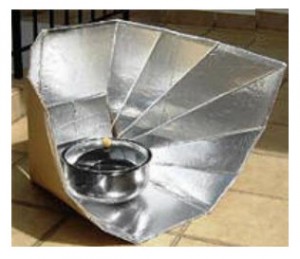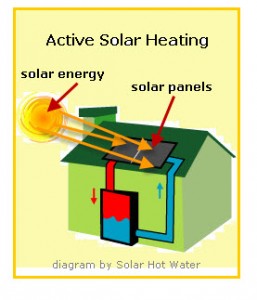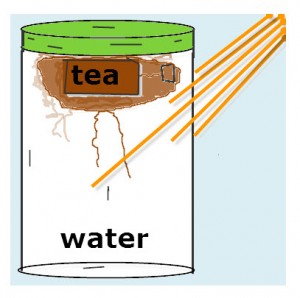Passive Solar Heating VS. Active Solar Heating
Solar energy is radiant energy from the Sun. This energy travels through space to Earth in the form of electromagnetic waves. In an hour, the Sun sends to the earth’s surface as much or more energy as people use to run factories, machines, and vehicles and to heat buildings for a year. But only a small part of this direct solar energy can be collected and used because the solar energy is so spread out over the Earth’s surface. Most of the solar energy that reaches Earth’s surface is in the form of visible light.
The two methods of directly using solar energy to heat buildings and homes are :
Passive solar heating is a method of heating with solar energy that does not require mechanical power to circulate heat. Instead, structural designs are used that help to absorb solar energy and allow the heat to circulate by natural convection. For example, during the year as Earth revolves (to move in a curved path about another object) around the Sun, because Earth’s axis is tilted in relation to the Sun, the apparent path of the Sun across the sky is lower in the winter and higher in the summer. So buildings in the Northern Hemisphere with large windows facing south allow more sunlight to enter a room than windows facing other directions. To prevent overheating in the summer, overhangs on buildings block some of the summer (high-angle) sunlight but allow more of the winter (low-angle) sunlight to enter and warm rooms. Another technique is to build a wall of special energy absorbing material that is painted black on the inside of the house. Black materials absorb more solar energy than other colors. This wall absorbs solar energy, heats up, then radiates this heat warming the house during the day and into the night.
Another example of a passive solar energy system is a solar oven, which is a device that uses sunlight to cook food. The simplest oven might be a metal box that gets hot inside because sunlight heats the metal or a closed jar containing a liquid that heats because of sunlight hitting the jar.
Some solar ovens use mirrors and/or lenses to focus sunlight onto the food.
Active solar heating is a method of heating with solar energy that requires mechanical power, such as pumps and fans, to circulate heat from solar collectors. A common solar collector is the flat-plate collector. It has a black metal plate in a box with a glass cover. Tubes filled with a liquid lie on the metal plate and are connected to pipes that carry the liquid through a building. The black metal plate absorbs heat from sunlight and heats the liquid in the tubes. A pump moves the heated liquid through a pipe, which runs through a container of water called a heat exchanger. Here the heat from the hot fluid in the pipe is transferred to the water. The cooler water in the pipe is then pumped back to the collector where it is reheated. The hot water in the heat exchanger is transferred to a storage tank for later use and cooler water is pumped into the exchanger to be heated. The hot water in the storage tank is pumped through pipes to different parts of the house including faucets and heaters. In a heater, some of the thermal energy of the water is lost as infrared radiation and some is lost as heat is transferred by conduction to the air surrounding the heater. The heated air transfers heat throughout the room by convection.
Activity: Sun Tea
Purpose: To use passive solar heating to cook with.
Materials
1-quart (1-liter) plastic jar with a lid
dishwashing soap
tap water
2 tea bags
sugar or other sweetener (optional)
Procedure
1. Clean the jar with soap and water. Rinse the jar well with water.
2. Place the tea bags in the jar.
3. Fill the jar three-fourths full with water.
4. Place the lid on the jar and set it outdoors in an area where the jar will receive direct sunlight.
5. Observe the contents of the jar every 30 minutes for 2 hours.
Results
The tea bags float in the water. After 30 minutes the water around the tea bags was colored a pale brown but the water below was uncolored. As time passed more of the water became colored below the tea bags until all of the water was colored. The color of the water became darker with time.
Why?
Solar energy strikes the glass jar and warms it. Heat from the molecules in the jar is transferred to the water by conduction.
The glass is transparent to the solar energy, meaning the solar energy is able to pass through the glass. Thus, the solar energy directly warms the water inside, and heat is transferred from one water molecule to others by conduction.
A tea solution forms when chemicals in the tea dissolve in the warm water in contact with the tea bags. A solution is a mixture of a solute (something that dissolves) and a solvent (what the solute dissolves in). The tea solution has a brownish color which gets darker as more tea chemicals dissolve in the water. The darker the color the more tea solute in the same amount of water, thus the more concentrated the tea solution. In time the concentrated tea solution around the tea bag diffuses (spreads evenly throughout) the water in the jar. Any difference in the temperature of the water in the jar will also create convection currents (the rising of warm fluids and sinking of cooler fluids) that will further mix the tea solution.



